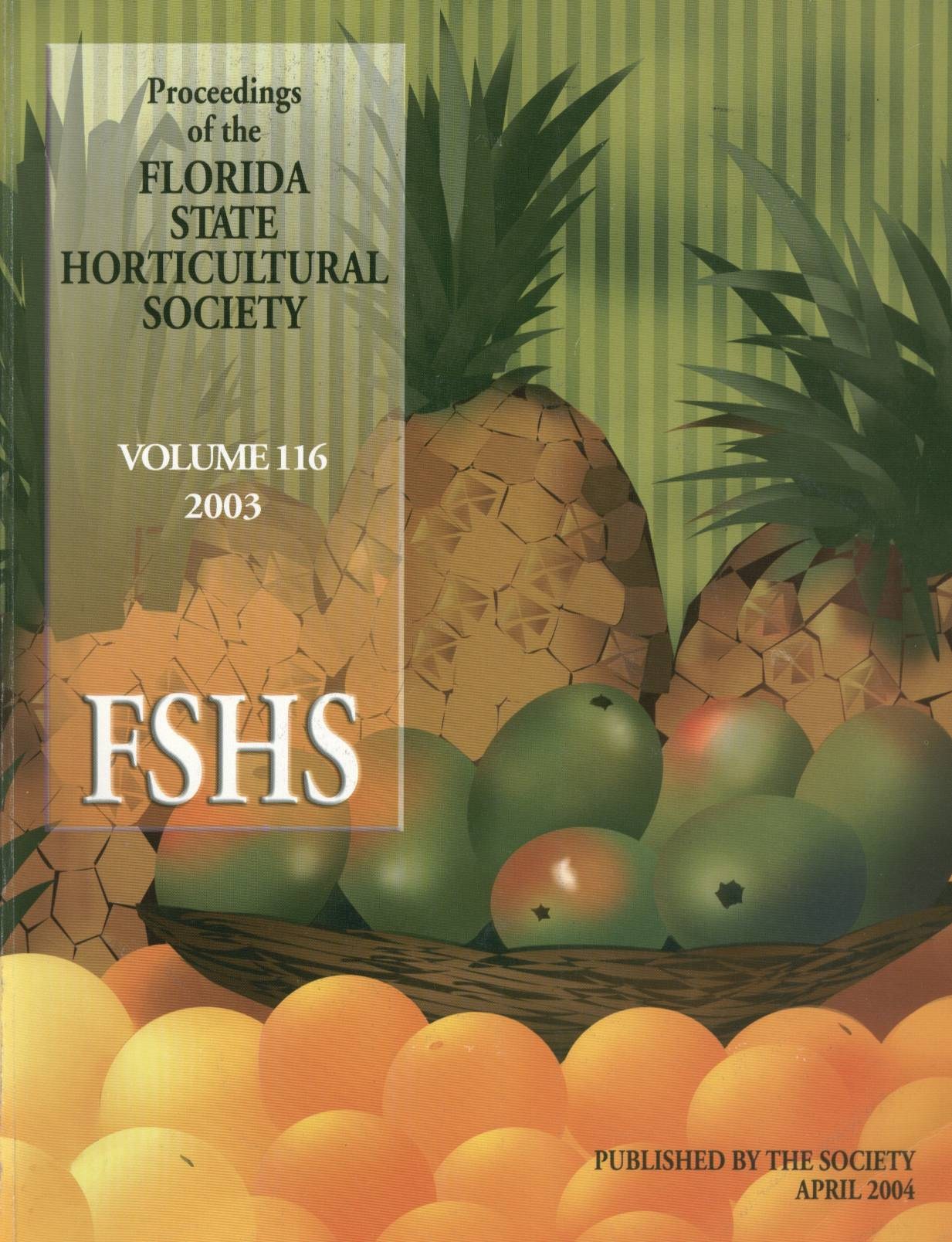Abstract
A study of soil characteristics, tree health, and Diaprepes abbreviatus (L.) root weevil (DRW) distribution was conducted in a poorly drained and declining citrus grove of 'Hamlin' orange on Swingle citrumelo rootstock (Poncirus trifoliata (L.) Raf. × Citrus paradisi Macfad.) in Osceola County, Florida, in 2002. Weevil adult populations were monitored from April through October with 50 Tedders traps arranged in five 10-trap transects and comprising a 35×25 m grid across the grove. Tree health was scored visually from slightly declined to severely declined using a four-point rating system. Soil electrical conductivity was measured using electromagnetic induction EM38 in each row throughout the grove. Soil organic matter, pH, cation exchange capacity (CEC), base saturation, major and minor cations (P, K, Mg, Ca, B, Zn, Mn, Fe, Cu), soil water content, water table depth, and soil texture and composition were measured at each Tedders trap location. Weevil adults were most abundant in the southwestern portion of the grove, and the adult population reached its yearly peak in June. Weevil abundance was not correlated with tree health at specific Tedders trap locations but was negatively associated with soil Mg, Ca, CEC, and H (P 0.05); and tree health was negatively correlated with Fe (P 0.05). It is suggested that DRW management at the field scale could be related to soil liming history, soil flooding, and rain or water erosion might be factors influencing DRW distribution at the field scale but further study is necessary to confirm these relationships.

